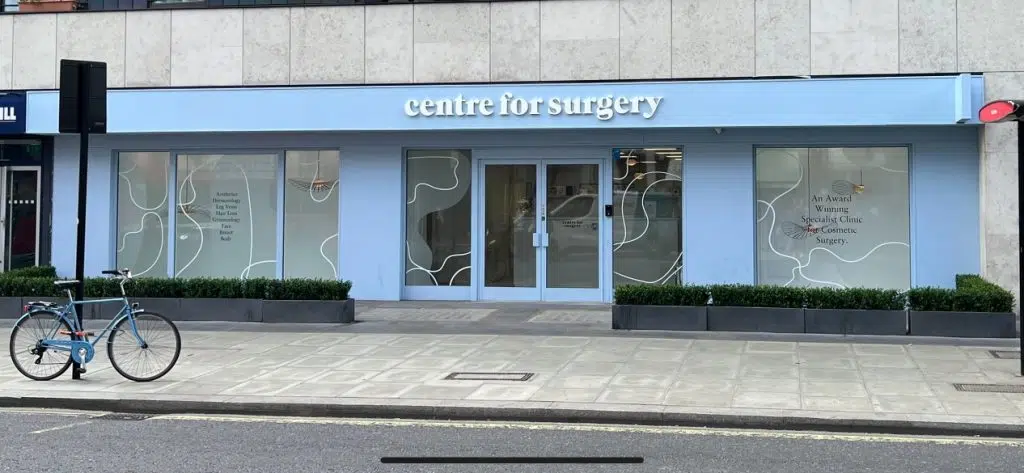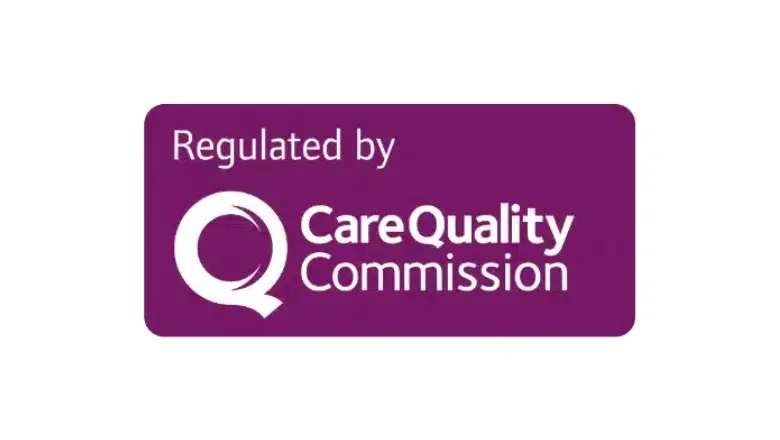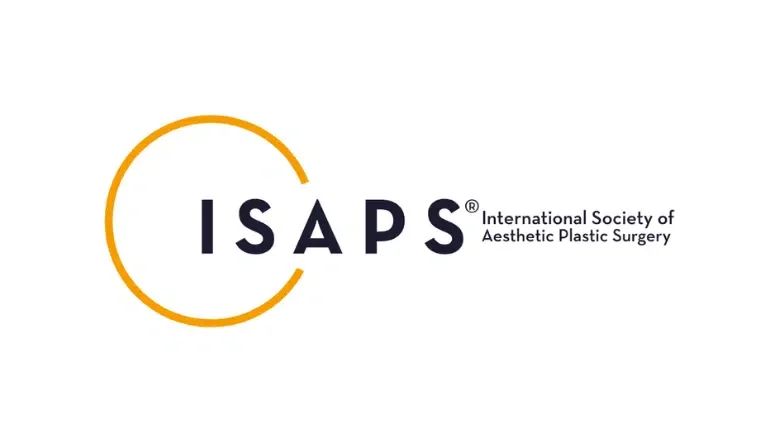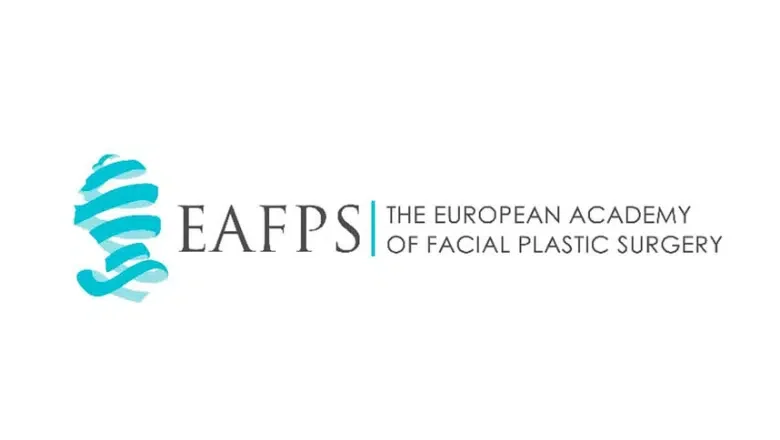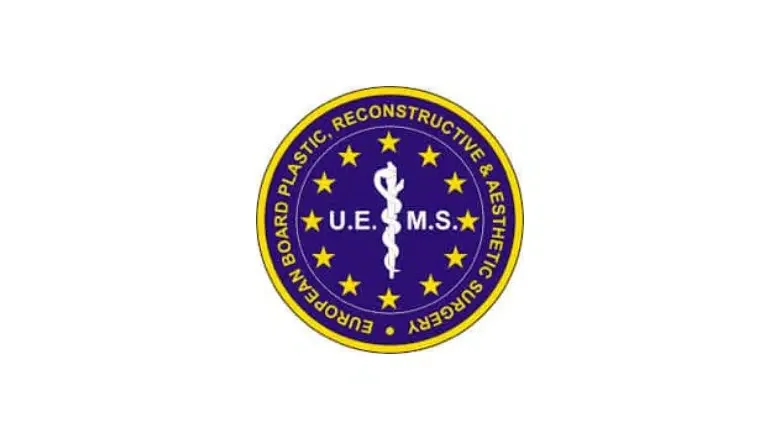Extended abdominoplasty is a surgical procedure designed to eliminate stubborn fat and excessive, sagging skin from the abdomen and hips. At Centre for Surgery in London, our seasoned plastic surgeons are proficient in these types of surgical interventions.
Our dedicated team of plastic surgeons boasts many decades of combined experience and a wealth of satisfied patients, illustrating our commitment to excellence. The issues we address range from excess skin, often referred to as an ‘apron’ due to its overhanging nature, stubborn abdominal fat, persistent love handles, or a widened abdominal muscle region often resulting from pregnancy.
We tailor our approach to your unique needs and body shape, taking into consideration your personal goals and expectations. Our aim is to deliver transformative results that enhance your body’s contour and elevate your confidence.
Please do not hesitate to reach out to us today. Let’s embark on this journey together towards achieving the body you desire and deserve.
What is an extended abdominoplasty?
An extended abdominoplasty is a surgical procedure designed to address stubborn fat and excess skin horizontally in the abdominal area. Unlike traditional abdominoplasty, this procedure involves a larger incision from hip to hip. Typically, a skilled plastic surgeon will place the incision between the pubic bone and belly button, allowing the scar to be easily concealed with clothing. The incision follows the natural contours of the body around the abdomen, extending into the hips and almost reaching the back. This approach avoids the need to turn the patient over during surgery. Extended abdominoplasty is an excellent option for body contouring, especially for individuals who have undergone massive weight loss, bariatric surgery, or pregnancies.
What is the difference between an extended and standard tummy tuck?
Do I need a full or extended abdominoplasty?
Determining whether you require a full abdominoplasty or an extended abdominoplasty depends on your unique body and goals. A full abdominoplasty primarily addresses fatty deposits and excess skin on the abdomen, with the incision following the lower crease of the belly to the start of the hips. In contrast, an extended abdominoplasty extends the incision further, including the hips. If you have noticeable love handles that you wish to address, opting for an extended abdominoplasty may be the appropriate choice to achieve the desired results.
Is an extended tummy tuck safer than liposuction?
Both liposuction and extended abdominoplasty procedures are generally safe when performed by a skilled and experienced specialist plastic surgeon. The rate of postoperative complications for extended abdominoplasty procedures is less than 5%, while for liposuction, it is slightly higher. It is important to note that liposuction and extended abdominoplasty are different procedures that yield distinct results. Liposuction focuses on removing excess fat, while an extended abdominoplasty involves the removal of excess skin and fatty tissue, as well as tightening the abdominal muscles. The choice between the two procedures depends on your specific goals and concerns, and it is best to consult with your surgeon to determine which option is most suitable for you.
Can an extended abdominoplasty get rid of an apron belly?
Yes, an extended abdominoplasty can address and remove an apron belly, which refers to the excess skin and fat that hangs over the abdominal area. The extended abdominoplasty procedure involves removing both stubborn fat and excess skin horizontally, including the lower abdominal region. This can significantly reduce or eliminate the appearance of an apron belly, providing a more contoured and rejuvenated abdominal area.
Will an extended abdominoplasty remove stretch marks?
An extended abdominoplasty can potentially remove some stretch marks, particularly those located on the lower abdomen within the area of excess skin that is removed. However, it is important to note that not all stretch marks can be completely eliminated, especially those that extend beyond the area of skin excision.
Can I get pregnant after an extended tummy tuck?
While it is possible to become pregnant after an extended abdominoplasty, it is generally recommended to postpone the procedure until you have completed your family planning. Pregnancy can significantly affect the results of an abdominoplasty, as the abdominal muscles and skin stretch during pregnancy, potentially reversing the improvements achieved through surgery. Additionally, weight fluctuations and hormonal changes during pregnancy can also impact the long-term outcome.
Can I have an extended abdominoplasty after pregnancy?
Yes, it is possible to have an extended abdominoplasty after pregnancy. Many women choose to undergo this procedure to restore their abdominal contour and address any concerns related to excess skin and muscle laxity following pregnancy. The timing of the surgery is crucial. It is generally recommended to wait until you have completed your family planning and have fully recovered from childbirth. This allows your body to stabilise and ensures that you are in optimal health for the surgery.
What is an apronectomy?
Apronectomy is a type of abdominoplasty that specifically targets the excess skin, often referred to as an “apron”, on the stomach, which commonly occurs after significant weight loss. This hanging skin can lead to various issues, such as infections, rashes, and ulcers, causing both physical and mental discomfort.
What is panniculectomy?
Panniculectomy, also known as apronectomy, is a surgical procedure that aims to remove the excess pannus or skin fold on the abdomen. After substantial weight loss, many individuals experience sagging skin in the lower abdomen that can cover part of the pubic area. This saggy skin not only causes discomfort, infections, and rashes but also negatively impacts the appearance of the lower abdomen, leading to self-esteem issues. Panniculectomy focuses on addressing this excess skin; however, it does not involve tightening the abdominal muscles.
What is a reverse tummy tuck?
A reverse abdominoplasty, also known as upper abdominoplasty, is a surgical procedure that targets the removal of excess fat, tissue, and skin from the upper abdomen. It does not involve tightening the abdominal muscles, and therefore, it does not significantly alter the waistline as an extended abdominoplasty would.
Will an extended tummy tuck make my stomach flat?
Yes, an extended abdominoplasty procedure aims to create a flatter stomach. During the surgery, the abdominal muscles are typically sutured together, which helps flatten the stomach and create a narrower waistline. However, it is important to manage expectations and understand that individual results may vary based on factors such as the amount of excess skin and the patient’s overall body composition.
Does an extended tummy tuck lift your pubic area?
No, an extended abdominoplasty does not lift the pubic area. The primary focus of an abdominoplasty is to address excess skin on the lower stomach, tighten the abdomen, improve overall contour, and slim the waistline. While the extended abdominoplasty may indirectly provide some aesthetic benefits to the pubic area due to increased exposure, it is not specifically designed to lift the pubic area.
Will an extended abdominoplasty get rid of FUPA?
While an extended abdominoplasty can provide some improvement in the upper pubic area, it may only yield marginal results for addressing FUPA (fat upper pubic area). For individuals specifically seeking a solution for FUPA, a procedure called Monsplasty or pubic panniculectomy is often recommended. Monsplasty is the most effective surgical solution for FUPA and can be performed at the same time as an abdominoplasty.
Will my upper thigh and back skin get tightened with an extended tummy tuck?
During an extended abdominoplasty, the primary focus is on addressing excess skin and tissue in the abdominal area. While the procedure primarily targets the abdomen, it may also involve some tightening of the upper thigh skin and back skin, especially in cases where there is significant laxity or excess skin in those areas.
RELATED: Lower Back Lift Surgery
Does an extended abdominoplasty lift your thighs?
No, an extended abdominoplasty does not lift the thighs. However, there is a separate procedure known as a High Tension Abdominoplasty that can lift the thighs and buttocks. Consult with a specialist plastic surgeon to discuss whether this procedure is offered and suitable for your specific case.
Can I combine other procedures with an extended tummy tuck?
Yes, it is possible to combine other procedures with an extended abdominoplasty to address multiple areas of concern and achieve comprehensive body contouring. Some commonly combined procedures include liposuction to further sculpt and refine the surrounding areas, such as the flanks (love handles) or thighs. Breast surgery, such as breast lift or breast augmentation, can also be performed concurrently for a more balanced overall aesthetic.
Is there an alternative to an extended abdominoplasty?
Yes, there are alternative procedures that can offer some of the benefits associated with an extended abdominoplasty. These alternatives include Fleur De Lis abdominoplasty, reverse abdominoplasty, and 360 abdominoplasty.
SUITABILITY FOR EXTENDED TUMMY TUCK
Can I get an abdominoplasty at 40?
Yes, it is possible to undergo an abdominoplasty at the age of 40. Age itself is not the sole determining factor for eligibility. The decision to undergo the procedure will depend on various factors such as overall health, medical history, and individual circumstances.
Can I get an abdominoplasty at 65?
Yes, it is generally possible to have an abdominoplasty at the age of 65. Age alone does not disqualify someone from undergoing the procedure. However, as with any surgery, it is essential to consider individual health, medical history, and potential risks.
What is the best age for an extended abdominoplasty?
There is no specific “best” age for an extended abdominoplasty. The most important factors to consider are your overall health, medical history, and specific body concerns. Extended abdominoplasty is commonly performed on individuals who have experienced significant weight loss, undergone bariatric surgery, or had multiple pregnancies.
How much weight can an extended abdominoplasty remove?
An extended abdominoplasty primarily focuses on removing excess skin and fat from the abdominal area, rather than being a weight loss procedure. The amount of weight removed during the surgery varies depending on the individual’s unique circumstances, such as the amount of excess skin and fat present. The main goal of extended abdominoplasty is to improve body contour and address aesthetic concerns rather than achieving significant weight loss.
Do I need to lose weight before an extended tummy tuck?
It is recommended that weight be lost before undergoing an extended abdominoplasty procedure. A BMI (Body Mass Index) below 30 is considered ideal for any plastic surgery. If your BMI is over 30, it is advisable to try to lose a few kilograms before the surgery. Excess weight can increase the risk of complications during the procedure and may result in a longer recovery period. Losing weight not only prepares you for surgery but also improves your overall health and immune system, leading to a faster and smoother recovery.
What is the best BMI for an extended abdominoplasty?
The best BMI for an extended abdominoplasty is below 30. Higher weight and body fat content can pose challenges during and after the procedure. If your BMI exceeds 30, consult with your specialist plastic surgeon to discuss ways to safely and effectively reduce your body weight. This not only helps with extended abdominoplasty surgery but also promotes better surgical outcomes and reduces the risk of complications. Healthy patients tend to recover more quickly and have fewer post-surgery complications.
What does the extended abdominoplasty consultation involve?
During your consultation for an extended abdominoplasty, your specialist plastic surgeon will ask you various questions to assess your condition, understand your desired results, and gather information about your medical history and family history. They will examine the saggy skin you want to address and evaluate your overall health and readiness for the procedure. You will have the opportunity to ask questions, voice concerns, and discuss any other procedures that are often performed alongside an abdominoplasty.
What should I wear on the day of surgery?
Wear comfortable and loose-fitting clothes on the day of your extended abdominoplasty procedure. You will be asked to change into a medical gown before the surgery, but you will be able to change back into your own clothes when you are discharged. Loose-fitting pants that do not exert pressure on your stomach and a loose top that is easy to put on, such as one with a zip or buttons, are ideal choices for comfort and ease of changing.
What should I bring on the day of surgery?
To ensure a smooth and organised extended abdominoplasty procedure, it is important to bring several items with you:
- All the paperwork and documents that your surgeon has asked for, such as consent forms, medical history forms, and any pre-operative instructions.
- Any lab results or blood work that you have been instructed to bring.
- Any medication that you regularly take, along with a detailed list of the medications, dosages, and frequency of use.
- If your surgeon does not provide a compression garment, bring one with you. This garment may be necessary for postoperative support and to aid in the healing process.
- Loose-fitting clothes to wear after the surgery, as you may experience swelling and discomfort in the treated area. Opt for comfortable clothing that is easy to put on and take off, such as loose pants and a button-up or zip-up top.
- Any additional items or supplies that your surgeon may suggest based on your specific needs and the postoperative instructions provided.
Can I drive myself to and from the clinic on the day of surgery?
While it is physically possible for you to drive yourself to the extended abdominoplasty surgery, it is not recommended. After the procedure, you will not be able to drive yourself home from our Baker Street clinic.
PROCEDURE
How long does an extended tummy tuck take to perform?
The duration of extended abdominoplasty surgery can vary depending on individual factors such as the extent of correction required, the complexity of the procedure, and any additional procedures being performed simultaneously. On average, extended abdominoplasty surgery typically lasts between 3 to 5 hours.
How much skin is removed in an extended tummy tuck?
The amount of skin removed during an extended abdominoplasty varies depending on the individual’s specific circumstances and desired outcomes. Your plastic surgeon will evaluate your pre-surgery condition and discuss your aesthetic goals to determine the appropriate amount of skin to be removed. In general, it can range from 2 to 7 kilograms of excess skin.
RELATED: Benefits of Excess Skin Removal After Massive Weight Loss
RECOVERY AND HEALING
Is an extended tummy tuck painful?
The pain experienced after an extended abdominoplasty procedure is typically moderate. Most patients describe the pain as being around 6 to 7 on a scale of 10. However, it is important to note that pain tolerance can vary among individuals. To manage post-operative pain, your surgeon will prescribe pain relievers that you can take as directed. These medications will help keep the pain at a manageable level. Most patients find that they can reduce their reliance on pain medication after the first week or two of the recovery period.
Is a tummy tuck more painful than a C-Section?
In general, most people consider a C-section to be more painful compared to an abdominoplasty. A C-section involves a deeper incision into the abdominal cavity and requires multiple layers of stitches. The recovery period for a C-section is typically longer as well. On the other hand, an abdominoplasty primarily focuses on the removal of excess skin and fatty tissue and may involve suturing of the abdominal muscles. Although there is still discomfort associated with an abdominoplasty, it generally involves less tissue impact compared to a C-section. Therefore, most patients tend to experience less pain during the recovery process following an abdominoplasty.
What can I expect after an extended tummy tuck?
How long does it take to recover after an extended abdominoplasty?
The full recovery time for someone who has undergone an extended abdominoplasty is typically around 6 to 8 weeks. However, the recovery process is gradual, and it may vary depending on the individual. Patients can typically resume light daily activities in the second week after surgery. It is essential to avoid driving while taking pain medication and to refrain from returning to work until any pain or discomfort has subsided. Non-physically demanding jobs may allow a return to work around three weeks after surgery, while physically strenuous occupations may require up to 6 weeks of recovery before returning to work.
Can I sleep on my side after surgery?
After an extended abdominoplasty, it is generally recommended to avoid laying on your side. Sleeping on your back in an elevated position helps minimise tension and strain on the abdomen, promoting proper healing and reducing the risk of complications.
Will an extended tummy tuck affect my posture?
Following an extended abdominoplasty, it is common to experience a somewhat hunched posture during the initial days of recovery. This can be attributed to the pull on your abdominal skin and the need to protect the incision site. However, as your healing progresses, typically within a week or so, you should be able to stand up straight more comfortably. The exact timeline for fully returning to your normal posture may vary depending on your individual healing process.
RELATED: How Long Will I Be Hunched Over After a Tummy Tuck?
Once you have passed the initial recovery stage, you should be able to stand and walk just as you did before the surgery. However, some patients may experience temporary back pain or discomfort, which could be managed with the assistance of a walker frame or other supportive devices.
When can I stand fully upright after surgery?
It typically takes around 4 to 7 days to be able to stand up completely straight after an extended abdominoplasty. However, it is important to listen to your body and not force yourself into an upright position if it feels uncomfortable or causes strain. The surgery involves the removal of skin and tissue, which may result in some tightness or tension in the abdominal area. Gradually, as your body heals and the tissues adjust, you will be able to stand up straight with greater ease.
Can I use the stairs after surgery?
You can climb stairs after an extended abdominoplasty if necessary, but it is important to do so with caution and assistance, especially in the initial stages of recovery. It is advisable to have someone accompany you while climbing stairs to provide support and ensure your safety. Take it slowly and hold onto the railing for stability. Listen to your body and avoid overexertion. If you feel discomfort or strain while climbing stairs, it is best to take breaks and rest as needed.
COMPRESSION GARMENT AFTER SURGERY
Will I have a lot of swelling after surgery?
Swelling is a normal occurrence following an extended abdominoplasty. It is a natural part of the healing process. However, it is important to manage swelling to prevent excessive pressure on the operated area. Wearing a compression garment as instructed by your surgeon, sleeping in an elevated position, engaging in mild physical activity such as short walks, and maintaining a healthy diet can all help reduce swelling after the surgery.
How long will I be swollen after surgery?
The majority of swelling should subside by the end of the second week after the extended abdominoplasty surgery. However, it is normal to have some residual swelling that gradually diminishes over the course of three to four months.
How long does it take for the lymphatic system to heal after surgery?
The healing time for the lymphatic system after an extended abdominoplasty can vary from person to person. On average, it may take approximately 2 to 3 months for the lymphatic system to fully heal. However, it is important to note that the recovery period is individualised, and it may take longer or shorter depending on various factors.
Why do I need to wear a compression garment after surgery?
Wearing a compression garment after extended abdominoplasty is essential for optimal recovery and results. The compression garment plays a crucial role in supporting the healing tissues and reducing swelling and bruising. If you choose not to wear a compression garment as instructed by your surgeon, several potential consequences may arise.
Firstly, without the compression provided by the garment, swelling may become more pronounced and prolonged. This can delay the healing process and increase discomfort during the recovery period.
Additionally, the skin in the treated area may be more prone to sagging without the support of the compression garment. This can result in less desirable aesthetic outcomes, as the skin may not conform as tightly to the underlying tissues, potentially compromising the desired contour achieved through the abdominoplasty.
When can I stop wearing my compression garment?
The duration of wearing compression garments after an extended abdominoplasty is typically around 6 to 8 weeks. However, it is important to follow your surgeon’s instructions regarding when to stop wearing them. Your surgeon will assess your healing progress and let you know when it is appropriate to discontinue or reduce the use of compression garments.
How tight should the compression garment be?
RISKS AND COMPLICATIONS
Are complications common after surgery?
Complications can occur in approximately 4 out of 100 extended abdominoplasty procedures. It is crucial to understand that the occurrence of complications should not deter you from considering an extended abdominoplasty, as the majority of risks and complications can be minimised and effectively managed through proper post-operative care.
Will smoking affect healing and results?
Yes, smoking can cause significant problems with extended abdominoplasty surgery. Smoking constricts blood vessels and reduces blood flow, which can impair the healing process and increase the risk of complications. Nicotine, a component of cigarettes, is also known to be an inflammatory agent, further hindering the recovery process. It is strongly advised to quit smoking at least six weeks before the procedure to minimise these risks and optimise healing. Smoking should also be avoided during the recovery period, as it can continue to impact healing and compromise the results of the extended abdominoplasty. It may be beneficial to use the upcoming surgery as an opportunity to quit smoking altogether, as it can greatly enhance your overall health and improve the success of the surgery.
What is the risk of developing a blood clot after surgery?
After an extended abdominoplasty, the risk of developing a blood clot can persist for approximately 2 to 10 days. During this period, it is important to remain somewhat active and avoid prolonged periods of inactivity or immobility. Gentle activities such as walking help promote blood flow and reduce the risk of blood clot formation.
How can I reduce the risk of blood clots after surgery?
To reduce the risk of blood clots following an extended abdominoplasty, there are several measures you can take:
- Engage in light physical activity: Gentle walking promotes blood circulation and helps prevent blood clot formation. Follow your surgeon’s instructions regarding the appropriate level of activity during the recovery period.
- Maintain a healthy diet: Proper nutrition and hydration contribute to overall health and can help minimise the risk of blood clots. Eat a balanced diet with minimal fat intake and stay well-hydrated.
- Avoid smoking: Smoking constricts blood vessels and impairs circulation, increasing the risk of blood clots. It is crucial to refrain from smoking before and after the surgery for optimal healing and reduced complications. Discuss smoking cessation strategies with your surgeon if you are a smoker.
SCARS AFTER SURGERY
Will scars be noticeable after surgery?
Yes, it is normal to have a visible scar after undergoing an extended abdominoplasty. In fact, the scar can be quite large. However, the good news is that your extended abdominoplasty scars will be strategically placed and neatly hidden under your underwear or swimwear line. This means that the only person who will truly see the scar is you, unless you choose to show it to others. Over time, the scar will undergo a maturation process and fade for most people. The fading process may take several months. During this time, it is recommended to maintain a healthy diet and follow your surgeon’s advice on scar care to minimise the visibility of the scar.
RELATED: What kind of tummy tuck scars should I expect?
How can I improve scarring after an extended tummy tuck?
There are several ways you can actively work towards improving scarring after undergoing an extended abdominoplasty. Firstly, keep your scar protected from excessive friction or irritation. You can achieve this by wearing loose clothing that does not rub against the scar. Additionally, applying generous amounts of silicone-based creams and any other ointments prescribed by your surgeon can aid in scar healing and minimise their visibility. It is important to avoid exposing your scars to direct sunlight for several months, as sunlight can promote the darkening of the scar and potentially lead to keloid formation. To protect your scar from the sun’s harmful rays, make sure to apply sunscreen and keep the scar covered when exposed to sunlight. Lastly, it is advisable to avoid putting excessive stress on the scar, which includes avoiding activities that may stretch or strain the abdominal area.
Can I suntan after surgery?
Yes, it is generally safe to suntan after an abdominoplasty procedure. However, ensure that your scar is not exposed to direct sunlight. Even if you are wearing swimwear that covers the scar, it is still advisable to apply a silicone-based cream on top of it and use a strong SPF solution with a minimum SPF30. This will provide an additional layer of protection for your scar against the sun’s harmful rays.
AFTERCARE
Will I eat less after an extended tummy tuck?
No, undergoing an extended abdominoplasty does not directly affect your eating habits or appetite. The primary purpose of an extended abdominoplasty is to remove excess skin and fatty tissue from the outer part of your body, rather than altering the size of your stomach or its capacity to hold food. Therefore, you should not expect to naturally eat less after the procedure.
Can my stomach get big after surgery?
Yes, it is possible for your stomach to still enlarge after undergoing an extended abdominoplasty. While many individuals report that it becomes more challenging to develop a significantly larger stomach following the procedure, it is not impossible. It is important to remember that an extended abdominoplasty does not remove all fat tissue from the abdomen. The remaining fat tissue can still grow and expand in size, potentially leading to an increase in the overall size of your stomach. Additionally, even though the skin is tightened during surgery, it can still stretch over time due to factors such as weight fluctuations and the natural effects of gravity.
How can I get a flat stomach after surgery?
How can I tone my stomach after surgery?
Following the appropriate healing period, typically around 8 to 12 weeks post-surgery, your surgeon may give you the go-ahead to engage in physical exercise and activities to further tone your stomach muscles. Consult your surgeon before starting any exercise regimen to ensure that you are fully healed and ready for physical exertion.
Once you receive approval, you can gradually incorporate exercises that target the abdominal muscles into your routine. This may include exercises such as crunches, planks, and leg raises. It is essential to start slowly and listen to your body, gradually increasing the intensity and duration of your workouts over time. Remember to maintain proper form and technique to avoid injury.
How long after surgery can I wear jeans?
After surgery, it is recommended to wear comfortable, loose-fitting clothing during the initial weeks of recovery. This allows for proper healing and minimises any unnecessary pressure on the treated area. As your body heals and your surgeon gives you the green light, you can gradually transition to wearing jeans or tighter clothing. It is important to wait until your body has sufficiently healed and to follow your surgeon’s instructions for when it is appropriate to start wearing jeans after surgery. Rushing into wearing restrictive clothing too soon can impede healing and compromise your results. Patience and adherence to your surgeon’s guidance will lead to a smoother recovery process.
Can you get an extended tummy tuck twice?
Yes, it is possible to undergo an extended abdominoplasty more than once. There are situations where individuals may choose to have a second extended abdominoplasty procedure. For example, suppose you have experienced significant weight fluctuations or have undergone new pregnancies following your initial surgery. In that case, it is possible for your skin to stretch again and result in sagging.
A second extended abdominoplasty surgery can help address this concern by removing the excess droopy skin and achieving a more desired aesthetic outcome. However, it is essential to consider that the skin can only withstand a certain amount of stretching, and repeated surgeries may lead to thinning and crepey skin.
Learn more about extended tummy tuck at Centre for Surgery
At Centre for Surgery, our surgeons take a personalised approach to each patient’s needs. During your consultation, your surgeon will assess your specific concerns, discuss your goals, and determine if an extended tummy tuck is the most suitable procedure for you. They will explain the details of the surgery, including the incision placement, expected outcomes, and potential risks and complications.
Our dedicated team will provide comprehensive pre- and post-operative care to ensure your safety, comfort, and optimal recovery. We prioritise patient education, so we encourage you to ask any questions you may have during your consultation or at any stage of the process.
If you are considering an extended tummy tuck, we invite you to schedule a consultation at Centre for Surgery. Our experienced surgeons will guide you through the process, discuss your options, and help you make an informed decision about your body contouring journey.

